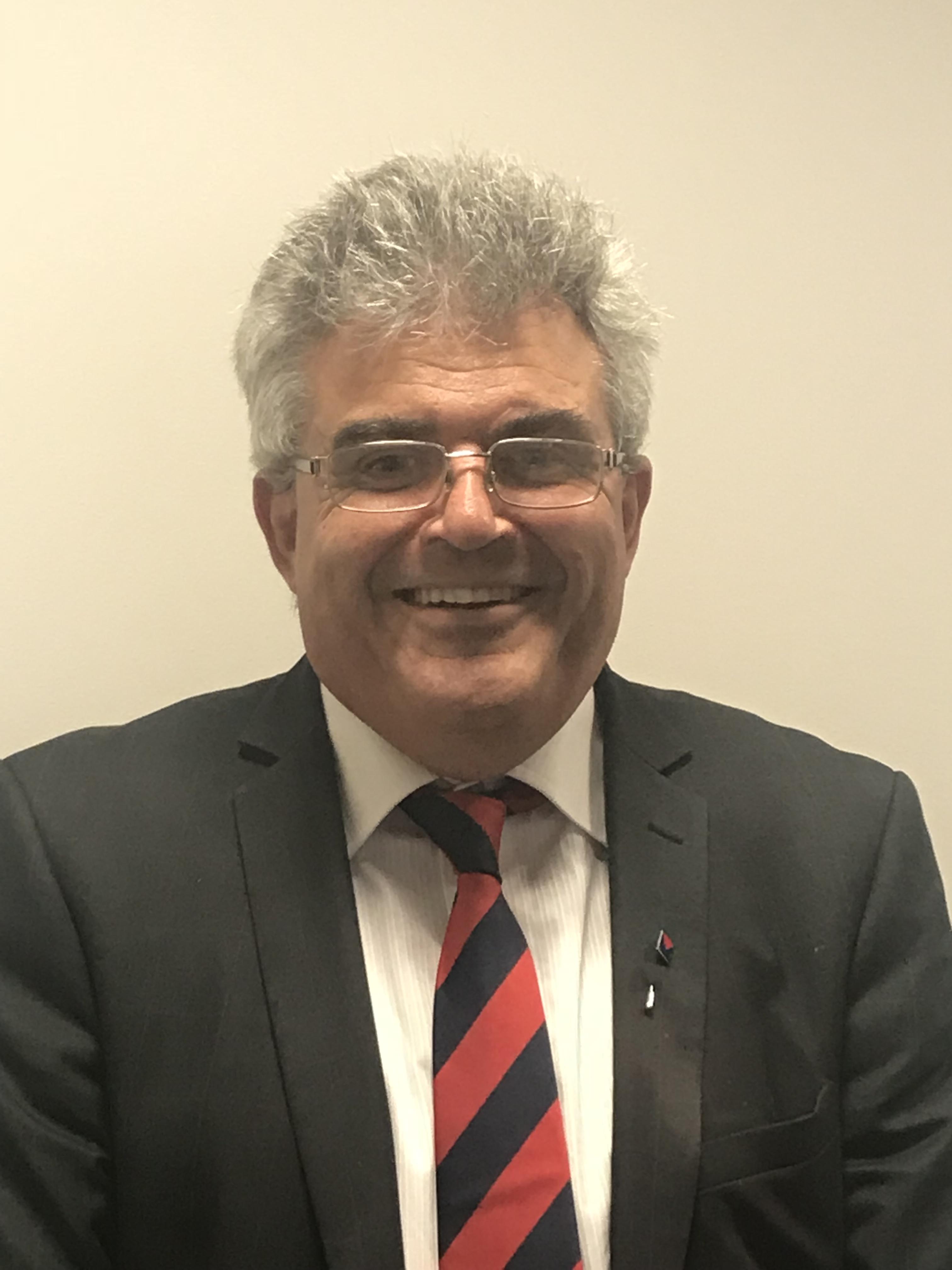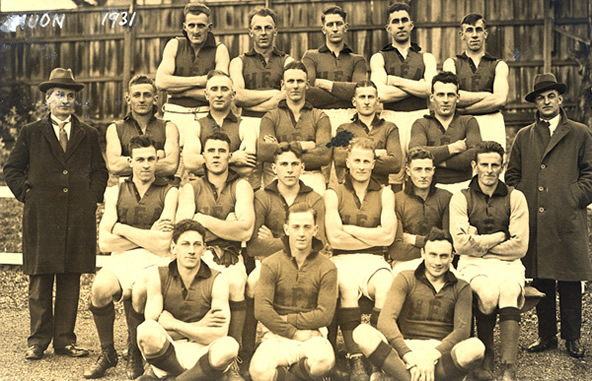Ben Brown, North Melbourne’s floppy-haired front man, learnt his craft in Tasmania. He split his formative years between Devonport in the state’s north-west, and Glenorchy in the south.
“Tasmania’s a football state – it always has been,” he says.
That football state, which has given the game an array of famous names – Hart, Baldock, Stewart, Hudson, Richardson, Riewoldt, Gale, and Lynch, to name just a few – is finally on the AFL’s agenda after two years in which it produced just one AFL draft pick. The AFL’s steering committee, which includes St Kilda champion Nick Riewoldt and coaches Brendon Bolton and Chris Fagan, is chaired by AFL CEO Gillon McLachlan. The committee will make recommendations to the AFL Commission with an announcement to be made by the June 30 deadline.
The issues in play go well beyond just getting an AFL team in Tasmania, though that remains the long-term ambition of the Tasmanian State League (TSL) presidents, who feel that reinforcing the health of the statewide competition is the starting point.
The committee has been criticised primarily because it doesn’t include any club presidents. John McCann, president of TSL club Glenorchy says that he, like many couldn’t, fathom why no current representative from the grass roots of Tasmanian football is included. “The three Tasmanians on the panel are all very eminent football people. Their expertise could’ve been augmented with current experience and passion for the game from the coal face.”
In 2015, McCann, described Tasmanian football as an eco-system that was “sick”. He said it wasn’t healthy enough to maintain a strong TSL competition, or to produce the premium talent craved by the AFL competition. At grassroots level, more and more kids turned to soccer, basketball and other codes, which have become more prominent in school sport programs. Crowd numbers in the TSL dwindled.
After an initial meeting in early May, where the presidents were informed of the AFL’s thinking regarding the state league, the presidents issued a joint statement saying the AFL proposal “leads one to the conclusion that they (the AFL) are interested in harvesting our young talent for the AFL but not so interested in other components of footy in the state”.
The bitterness in this statement reflects a history of decisions from the AFL and AFL Tasmania that have angered football people in the state.
“A succession of decisions has been made and mostly forced upon the football system in Tasmania,” McCann says. Craig Martin, the president of TSL side North Hobart, watched his club marched towards the brink of extinction after it was forced to merge with local rival Hobart in 2013.

Craig Martin, president of TSL side North Hobart. Photo: supplied.
The club – formed in 1881 – lost its name, its jumper and, in Martin’s eyes, its identity.
“AFL Tasmania decided in 2012 that only one state-wide league license would be issued for metropolitan Hobart. They invited us to bid, along with Hobart. A lot of blood, sweat and tears went into that bid. Then, at the eleventh hour, AFL Tasmania informed both clubs there would be no selection process, and that the two clubs would be forced into a merger,” he explains.
They could’ve begged their regional league for a license instead, but there were no guarantees that would occur. “We had to vote during 2012 on whether we would have 50% of something or 100% of nothing. It was a terrible thing that was done, and it caused an enormous amount of heartache for North Hobart people,” Martin says.
In 2017, a member’s vote returned the old North Hobart name, and the club is now back playing in its traditional red and blue jumper. The corresponding upsurge in membership and sponsorship means that the club has paid back all of its creditors.
“We’ll make a profit of some description this year. But the club would’ve run out of money in March 2018 if we’d stayed as Hobart City. We’d be dead as a dodo.”
While bitterness at past treatment of Tasmania by the AFL still lingers, there has been more dialogue around the issues at hand since the steering committee was announced in March.
McCann says, “To his credit, Gillon McLachlan is the first AFL boss we’ve actually engaged with. He’s committed to address some of the ailments, and will remain personally involved in repairing the structure of the game in Tasmania. If we’d wanted to know what previous AFL CEOs thought, it was through a news bite on TV, usually dismissing the idea of a Tasmanian-based AFL team.”
McCann, Martin and the other five TSL presidents have presented McLachlan with Tasmania’s football story, and with what the TSL can offer as competition. “We trust in the hope that he sees the health of the game around the country as his personal responsibility, as much as he does the success of the AFL’s premium league,” McCann says.
The good news is that after two years where only one Tasmanian kid was taken in the draft, this year’s crop from the Apple Isle looks to be the strongest in years. There are 13 Tasmanian juniors in the Allies squad for the National Under 18s Championships. Over 100 young TSL club players have places in AFL Academies. The TSL presidents are hoping five or more Tasmanians will have their names called out come draft day. North Launceston’s Tarryn Thomas is already being touted as a potential top 10 pick.
McCann’s personal involvement with Glenorchy started when he was a kid, back in the 1970s. He’s seen superb players don the club’s black and white jumper, including Peter Hudson, Darryl Sutton, Trevor Sprigg and Rodney Eade. In more recent times, McCann watched Ben Brown in the black and white.
Brown sees the TSL as a critical part of Tasmania’s football landscape. He spent time in the league with Devonport and Glenorchy, and a year in the VFL with Werribee, before North Melbourne took him as a mature-aged recruit, using pick 47 in the 2013 draft.
Brown’s the oldest of six brothers, three of whom are still involved in the game at Glenorchy. His grandfather, “Gentleman” Jim Manson was a Glenorchy legend. His uncle, James Manson, won the 1990 VFL/AFL flag with Collingwood.
“With the benefit of hindsight, I do think having two years in the TSL was really important in terms of football but also in terms of life. I had three years outside the system,” he says.
Glenorchy had the facilities and the level of professionalism required to help Brown grow as a player after he originally missed out on the draft. After a stellar 2012 season playing in the ruck, Brown finished in the top-20 in the TSL’s best and fairest. But no one noticed.
“I thought I’d had as good of a year as I could’ve had at Glenorchy, but the lack of interest that followed meant I was forced to look at other avenues,” he says.
VFL side Werribee, aligned with North Melbourne at the time, took Brown on. The move was partly about the quality of the competition, and the need to test himself against AFL-listed players. It was also partly about his playing position. 199 centimetres tall and lightly built, Brown was an undersized ruck, and had to get himself playing as key forward to try and make the cut.
“It was a bit of a last-ditch effort at the time,” he says.
Given the struggles Brown had to get himself in front of the right sets of eyes, he’s all for the idea of bringing a Tassie Devils team back into the VFL, where more recruiters are watching. The Devils played in the VFL between 2001 and 2008, before the current TSL was established.
Brown also believes that there could be changes made to the TSL to entice players to the competition. Having experienced the travel involved first hand, which often involves sacrificing the whole weekend, he feels that the incentives for players to stay in the TSL and not drift to country competitions could be better.
McCann agrees, and says the salary cap is too low to attract ex-AFL players back to the TSL. They can make more money playing country footy. He also laments the fact that, in 2016, the AFL scrapped interstate transfer fees, which made it easy for mainland leagues, especially the NEAFL, to poach Tasmanian talent without any compensation for local clubs.
“After our 2016 premiership at Glenorchy, we had premiership players lured to mainland clubs. Four of them went to the NEAFL.” A NEAFL recruiter told McCann that “it’s cheaper to get talent from Tasmania than to develop it yourself.”
As for the long-term prospect of a Tasmanian AFL team, Brown says he’d like to see Tasmania be the next cab off the rank if the competition expands again, but knows the TSL and grassroots issues in the state need to be addressed first. He remembers pulling on the “map” – the famous myrtle, magenta and primrose jumper – with fondness, and reckons Tasmanian people deserve to eventually see it in the AFL.
“Tasmanians will always love football. I think the AFL and AFL Tasmania have to tread carefully. They’ve just got to make sure they don’t take Tassie footy, and Tassie footy fans, for granted,” Brown says.

Tas representative team, 1920. Photo: State Library of Victoria.
This article was also published in Sporting Chance Mag.




